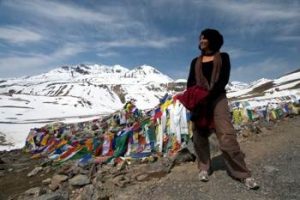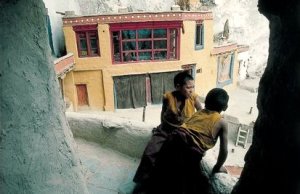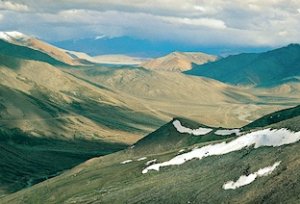Tours in Ladakh
TOURS in LADAKH
About the Tours in Ladakh
Ladakh is a part of the Indian Himalayas, located between the main Himalayan Range in the south and the Kunlun and Karakoram Range in the north. As it is the only Indian region that lies north of the Great Himalayan Range, it is very different from the rest of the Indian Himalayas. In many ways it resembles Tibet. Although part of India now, and earlier part of the princely state of Kashmir, Ladakh has been an independent kingdom for almost 900 years.
Ladakh is best known for its ‘Tibetan’ culture and its starkly beautiful mountain scenery. It is inhabited by a mix of Indo-Aryan and Tibetan people. Especially the latter, with their colorful Buddhist culture, have given the region the nickname of ‘Little Tibet.’
MOUNTAIN RANGES AND PASSESLadakh is not just high, its very mountainous as well. North of the Great Himalayan Range, three other mountain ranges define its geography. The Zanskar Range separates Ladakh proper – the Indus Valley with its capital Leh – from the valleys of Zanskar, where 10,000 people still live in relative isolation. North of the Indus Valley, the Ladakh Range separates Ladakh proper from the Nubra Valley. This area is bound and separated from Pakistan and China in the north(east) by the Karakarom Range and the uninhabitable Aksai Chin Plateau.
As a result of its location, in the rain shadow of the Great Himalayan Range, the climate of Ladakh is extremely dry. And due to the high altitude – most valleys are situated at 3300m or higher – winters can be extremely cold. Summers, however, are generally pleasant if not warm and sunny.
Read more…Read less…
The remoter areas of Zanskar, Nubra and Rupshu (also called Changtang, in the southeast of Ladakh) can be visited from Leh by car, on foot (trekking) or by bicycle. Trekking or bicycling would be our advised means of transport. That is, if you are up to it. Because, while jeep trips in Ladakh are very rewarding indeed, trekking and bicycling will give you an even more in-depth experience of the land and the people, with the added bonus of a total renovation of body and soul.
Ladakh can be reached by air or overland. On this tour, you fly in and out. In case you have enough time available, we strongly recommend taking one of the overland routes, in which you travel by train and car to Ladakh through Srinagar in Kashmir, Manali or Shimla, the latter two both in the Himalayan state of Himachal Pradesh. These are among the greatest car journeys in the world.
Jeep Tours
Treks
Winter Treks
Mountain Bike Tours
Wildlife Tours
ABOUT Ladakh
Ladakh has the most spectacular landscapes of India, and according to many also the most fascinating culture. Being part of the Tibetan Plateau, and bigger than most American states, it is a high altitude desert where rainfall is as sparse as in the Sahara. It is India’s highest inhabited region, with a very slight population which in the eastern part is predominantly Buddhist. It is also referred to as the Trans-Himalaya, as going there involves crossing the Himalayan Range, just as a journey to Tibet would.
Ladakh is a country of emerald green oases of carefully managed barley fields, speckled with white-washed farm houses, and set amidst bare, but brightly colored slate and sandstone mountains that run up to a dazzling 7672m (25170ft.). It is the outcome of a unique millennia-old interplay between the great forces of nature and man’s ability to harness them to his own benefit.
Ladakh and the lesser known neighbouring Himalayan areas Zanskar, Nubra, Rupshu and Spiti are certainly remote and isolated. Isolation breeds uniqueness, if not splendor. Ladakh is forbidding, yet welcoming and enchanting. Life in Ladakh among the unforgiving mountains seems hard at first glance, yet travelers and trekkers come away with a feeling of timelessness and magic. Come and see it for yourself! But: traveling the heights of Ladakh is literally breathtaking, so take your time.
OVER THE HIGH PASSESThe larger area commonly referred to as ‘Ladakh’ is bounded by two of the mightiest mountain ranges in the world, the Great Himalayan Range and the Karakoram. A number of parallel running mountain ranges divides this area further into different regions, each with its own distinct but similar subculture: Ladakh, Zanskar, Rupshu and Nubra. Spiti lies further to the southeast and is most easily approached from Shimla or Manali in Himachal Pradesh.
Out of the other four regions Ladakh is easiest approached by flight. It’s capital Leh is served by at least three flights a day. But due to the high altitude, this is not necessarily the wisest approach. After reaching Leh, it will not be just the awesome mountain vistas that will take your breath away. To get used to the rarified air two or three days complete rest are required. This process of acclimatization will continue during your stay and gradually improve your feeling of fitness.

The other option is to embark on one of the most spectacular road trips in the world, either from the green valley of Kashmir or via pine-scented Manali in the mountains of Himachal Pradesh. The road trip takes at least two days from Kashmir or three days via Manali. But that would be pushing it. For the Manali route, we advise a full six days in order to enjoy the journey to the fullest (starting from Delhi). This will also enable your body to get gradually acclimatized to the altitude, effectively saving you time after you reach Leh.
This route is open from the end of June till the beginning of October. This 485 km Himalayan journey is a visual delight with not one moment of boredom. From Manali (1800m/5400 ft.) the road climbs the Pir Panjal Range, crossing it at the 3978m/13,000ft high Rohtang Pass. As the landscape becomes more barren and Buddhism gradually replaces Hinduism, another climb brings you into the glaciar-clad Himalayan Range, which you cross at the Baralacha La (4830m/15,800ft). ‘La’ means pass in Tibetan and Ladakhi, and from now on all passes will have this ending. Slightly descending, you traverse the majestic, empty and colourful Lingti Valley, part of the high plateau of Rupshu. After the final assault of the highest of all, the Taglang La (5360m/17,580ft) it is almost 2000m (6500 ft.) down to Leh in the Indus Valley (Ladakh).
A longer version of this road trip starts from Shimla in Himachal Pradesh (easily reached within a day from Delhi). From here you follow the river Sutlej through spectacular gorges up to the Tibetan borderland of Spiti. Climbing out of this remote valley, you join the Manali-Leh highway and continue to Leh. This 12-day journey is, without doubt, one of the best road journeys in the whole Himalayas. Needless to say, we can organise fantastic treks here as well, including some on which you climb into Spiti, crossing the Himalaya Range.
Once in Leh you can explore the many splendid gompas (Buddhist monasteries) of the Indus Valley, embark on a trek to explore the real Ladakh as it is still found in remote villages or opt for outdoor sports such as rafting and mountain biking. Rafting on the river Indus is a very enjoyable way to experience the valley’s most rugged and beautiful landscape. It is possible from June end to late August. Rafting is generally done on two different stretches of the river Indus, from Spitok to Nimmu and from Minnu to the ancient monastic complex at Alchi.
BEYOND LEH AND THE INDUS VALLEY
Zanskar is tucked away between the Great Himalayan Range and the Zanskar Range, which effectively closes it off from Ladakh for eight months per year due to heavy snowfall. It is a trekker’s paradise where every pass conquered means a new Shangrila opening up in a hidden valley below. In summer, many popular trekking routes lead you there, but also an adventurous two-day jeep or bus drive through Kargil, crossing the 4400m high Pensi La. Exploring the Zanskar valley around its tiny capital Padum, visiting its many beautifully located gompas (Buddhist monasteries) by jeep or on foot is a delightful and rewarding experience. It will charge you with memories that last you a lifetime.
Summer 2020 a new rough road has been opened between Darcha (on the Manali – Leh road) and Padum. It follows the magnificent trekking trail between these places and, sadly, makes this trekking trail redundant now. For those who would not consider doing this on foot in any case, this is good news, however. You can travel now in two days from Keylong / Darcha to Padum. On the way you’ll pass time-warped villages as well as the formerly hidden cave monastery of Phugtal. From Padum you can follow another rough road along Lingshed, Photaksar, Hanupata and Wanla to Lamayuru (on the road between Kargil and Leh) completely bypassing Kargil. We will soon add new itineraries that will take in this route.

Nubra Valley is actually very close to Leh, but hidden behind the 5400m high Khardong La, one of the highest motorable passes in the world. Nubra is made up of the upper Shyok and Nubra rivers, draining the easternmost outcrop of the Karakoram. The wide valley floors are covered with thickets of sea buckthorn interspersed with extensive sand dunes. Bactrian camels would seem perfectly in place here, and when you think you see them you may not be dreaming. A healthy population of these two-humped desert dwellers has grown out of animals that stayed back after the caravan routes were cut of in 1962. The villages are large and prosperous and have thick plantations of willow and poplar. The average altitude of the valley is 3000m/10,000ft and summer temperatures vary between 15-28 deg C.
Nubra was the scene of millennia-old trading routes to Yarkand and Khasgar in Turkmenistan (these days part of China). Avid trekkers can still tread in the footsteps of Hien Lu, Sven Hedin and many others who entered Ladakh along these high and forbidding roads, be it only on the parts of these trails that run between Nubra and the Indus Valley. Nubra has cute little villages where the beating of bells attached to giant prayer wheels resonates among the thick apricot groves and merges with the sound of glacial streams rushing down from the mountains. The daily agenda runs from the departure to the home-coming of the yaks and cows. Nubra has hidden Buddhist monasteries that can only be reached on foot, friendly unassuming people, and the seemingly unexplored Karakoram mountain masses that hide the ancient caravan routes to China. Moreover, it has an empty vastness that is hard to find elsewhere.
Half of the fun of a trip to Nubra is getting there. The 5450m/18,380 ft high Khardung La is on of the highest motorable passes in the world and rewards the traveler with views of Leh town as well as some extremely high alpine pastures where yaks graze away at lichens and hardy grasses.
 Rupshu is as barren and desolate as it gets in Ladakh, but attracting more people these days then ever before. Bordering and being part of the western Tibetan plateau of Changtang, most of its valleys are so high that no crop will grow and its winters so cold that only yaks and pashmina goats can survive. The up-turn is that the goats produce the warmest wool on earth, the so-called pashmina, which makes the owners of these animals, the so-called Changpa, good money. For that, they have to follow their animals to where-ever the sparse grasses and sedges are to be found, even in the midst of winter forever unfolding and packing their black yak-hair rebos (tents).
Rupshu is as barren and desolate as it gets in Ladakh, but attracting more people these days then ever before. Bordering and being part of the western Tibetan plateau of Changtang, most of its valleys are so high that no crop will grow and its winters so cold that only yaks and pashmina goats can survive. The up-turn is that the goats produce the warmest wool on earth, the so-called pashmina, which makes the owners of these animals, the so-called Changpa, good money. For that, they have to follow their animals to where-ever the sparse grasses and sedges are to be found, even in the midst of winter forever unfolding and packing their black yak-hair rebos (tents).
Rupshu has become famous recently among Indian tourists because of a film shot at the cobalt-blue Pangong Tso, an enormous salty water lake on the border with Tibet (China). Bollywood marketing apart, Pangong’s popularity is deserved as it is stunning indeed.
But even more spectacular is trekking though this high altitude plateau, for instance between the two other lakes, Toskar and Tsomoriri. Though not for the feebles ones, trekking through Rupshu, gives youFestivals in Ladakh 2023 & 2024
| Date 2023 | Date 2024 | Festival | Place |
|---|---|---|---|
| 19-20 January | 9-10 January | Spituk Gustor | Spituk Monastery |
| 18-19 February | 7-6 February | Leh & Likir Dosmochey | Leh & Likir |
| 22-23 February | 12-13 February | Yargon Tungshak | Nubra (Yarma) |
| 1-2 March | 19-20 February | Stok Guru Tsechu | Stok |
| 6-7 March | 23-24 February | Matho Nagrang | Matho |
| 22 March | 10 March | Shey Dool Lo (Rul Lo) | Shey |
| 4 Jun | 23 May | Saka Dawa | Ladakh |
| 5-6 June | 23-24 June | Sachukul Gustor | Sachukul Monastery |
| 5-6 June | 23-24 June | Stongday Gustor | Stongdey Monastery |
| 15-16 June | 3-4 June | Yuru Kabgyat | Lamayuru Monastery |
| 28-29 June | 16-17 June | Hemis Tsechu | Hemis Monastery |
| 6 Jul | 6 July | Birthday H.H. the Dalai Lama | Choglamsar |
| 11-17 July | 11-17 July | Ladakh Polo Festival | Shagran, Chushot Gongma |
| 15-16 July | 3-4 July | Karsha Gustor | Karsha Monastery |
| 15-16 July | 3-4 July | Phyang Tsesdup | Phyang Monastery |
| 21-22 July | 9-10 July | Korzok Gustor | Korzok Monastery |
| 28-29 July | 16-17 July | Dakthok Tsechu | Dakthok Monastery |
| 31 July – 1 August | 20-21 July | Sani Nasjal | Sani Palace |
| 1 Aug | 21 July | Tingang Tseskarmo | Tingmosgang |
| 26 Aug | 13 September | Shey | Srubla Shey |
| 12-13 October | 30-31 October | Deskit Gustor | Diskit Monastery |
| 12-13 October | 30-31 October | Nyoma Gustor | Nyoma |
| 31 October – 1 November | 18-19 November | Thiksay Gustor | Thiksey Monastery |
| 11-12 November | 28-29 November | Chemday Wangchok | hemrey Monastery |
| 7 Dec | 25 December | Galden Namchot | Ladakh |
| 13 Dec | 31 December | Ladakhi Losar | Ladakh |








